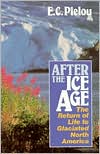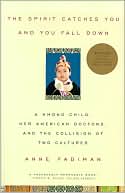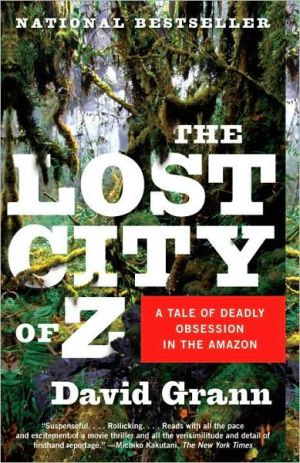After the Ice Age: The Return of Life to Glaciated North America
The fascinating story of how a harsh terrain that resembled modern Antarctica has been transformed gradually into the forests, grasslands, and wetlands we know today.\ "One of the best scientific books published in the last ten years."—Ottowa Journal\ "A valuable new synthesis of facts and ideas about climate, geography, and life during the past 20,000 years. More important, the book conveys an intimate appreciation of the rich variety of nature through time."—S. David Webb,Science
Search in google:
The fascinating story of how a harsh terrain that resembled modern Antarctica has been transformed gradually into the forests, grasslands, and wetlands we know today."One of the best scientific books published in the last ten years."—Ottowa Journal"A valuable new synthesis of facts and ideas about climate, geography, and life during the past 20,000 years. More important, the book conveys an intimate appreciation of the rich variety of nature through time."—S. David Webb,Science Booknews the fascinating story of how a harsh terrain that resembled present- day Antarctica was transformed gradually into the forests, grasslands, and wetlands of (pre-European) present-day Canada and the northernmost US. With 259 drawings and maps. For a general readership. Annotation c. Book News, Inc., Portland, OR (booknews.com)
Part One: Preliminaries1. The Physical SettingThe Changing Climate of the Last 20,000 YearsThe Dating MethodThe Ice SheetsIce and SeaIce and Fresh WaterIce and AtmosphereIce-free Land: Refugia and Nunataks2. The Fossil EvidenceFossilsMicrofossilsPollenSediment Cores and Pollen DiagramsDating: The Radiocarbon MethodDating by Volcanic Ash Layers3. Interpreting the EvidenceSome of the ProblemsInterpreting Pollen DiagramsInterpreting Geographical Range Maps: AnimalsInterpreting Geographical Range Maps: Plants4. The Migration of VegetationShifting Zones of VegetationThe Starting ConditionsConditions in the Newly Deglaciated LandThe Invasion by PlantsThe Renewal of VegetationEcological InertiaPhotoperiodismPart Two: The Time of Maximum Ice5. Eighteen Thousand Years Ago: Life South of the IceLarge Mammals and Their Environments South of the Ice SheetsHuman Life South of the IcePlants South of the Ice Sheets6. The CoastsNorth America as an Extension of AsiaThe South Coast of BeringiaThe Western Edge of the IceThe East Coast Plains and IslandsThe East Coast Refugia7. Beringia and the Ice-free CorridorBeringia and Its Big GameHuman Life in BeringiaThe Ice-free CorridorRefugia Near the Ice-free CorridorPart Three: The Melting of the Ice8. The Ice Begins to MeltSouth of the Ice: TundraSouth of the Ice: Forest Parkland and MuskegStagnant IceSuperglacial and Ice-walled Lakes and Their Ecology9. The Great Proglacial LakesGlacialLakes Missoula and ColumbiaMigration from BergingiaGlacial Lakes Agassiz and McConnellThe Precursors of the Great Lakes and Glacial Lake Ojibway10. The Rising SeaThe Sundering of BeringiaThe Atlantic ShoreThe Atlantic CoastlandsThe champlain SeaThe Tyrell SeaPart Four: The Pleistocene/Holocene Transition11. The End of an EpochThe End of the PleistoceneThe Changing ForestThe Prairie GrasslandsTransition in the West: The InteriorTransition in the West: The CoastBeringia at the Turn of the Epoch12. The Great Wave of ExtinctionsExtinction Waves: When, Where, and WhatThe Prehistoric Overkill HypothesisThe Arguments against OverkillChanging Environment TheoriesExtinct BirdsPart Five: Our Present Epoch, The Holocene13. The Great WarmthSome Northward Shifts of Northern LimitsThe Hypsithermal at SeaThe Hypsithermal in the MountainsRefugia from the Drought Human Life in the Hypsithermal14. The NeoglaciationThe Spread of MuskegIncreased Rain in the PrairiesThe Shifting Ranges of Forest Tree SpeciesThe Neoglacial and the Northern TreelineRefugia ReestablishedRespites in the NeoglaciationThe Little Ice AgeEpilogueAppendix 1: Names of Species: English and LatinAppendix 2: Names of Species: Latin and EnglishNotesIndex
\ Booknewsthe fascinating story of how a harsh terrain that resembled present- day Antarctica was transformed gradually into the forests, grasslands, and wetlands of (pre-European) present-day Canada and the northernmost US. With 259 drawings and maps. For a general readership. Annotation c. Book News, Inc., Portland, OR (booknews.com)\ \








